
The São Paulo Art Biennial was founded in 1951 and has been held every two years since. It is the second oldest art biennial in the world after the Venice Biennale, which serves as its role model.

Shirin Neshat is an Iranian visual artist who lives in New York City, known primarily for her work in film, video and photography. Her artwork centers on the contrasts between Islam and the West, femininity and masculinity, public life and private life, antiquity and modernity, and bridging the spaces between these subjects.
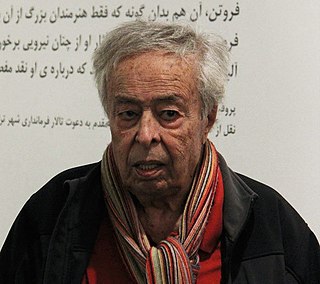
Mohsen Vaziri Moghaddam, was an Iranian-born painter, sculptor, and a professor of art. He has been described as the "pioneer of modern Iranian abstraction."
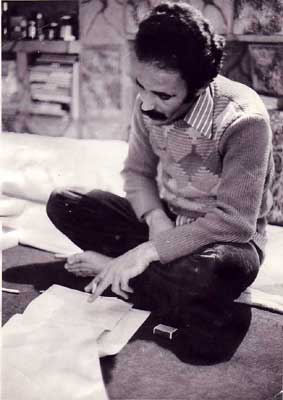
Houshang Golshiri was an Iranian fiction writer, critic and editor. He was one of the first Iranian writers to use modern literary techniques, and is recognized as one of the most influential writers of Persian prose of the 20th century.
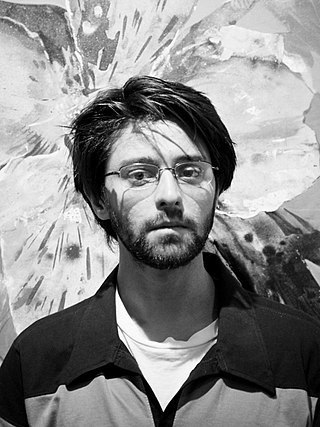
Amirali Ghasemi is an Iranian independent curator, media artist, and graphic designer. He is the founder and director of Parkingallery, an art space in Tehran that has established itself as an accessible platform for young Iranian contemporary artists. He has worked at both art production and curating with the intention of showing aspects of Contemporary art in Iran that do not fall into the trope of what he calls, ‘'Chador art'’ or stereotypes of life in Iran packaged for foreign consumption.
A cursory glance at the history of art reveals that social, political and economic conditions have always played a major role in the emergence of new artistic currents and styles. As an example Flight by Morteza Katouzian is showing the marginalized people who have no freedom as result of political changes. In Iran, the social and political developments of the 1940s radically altered the evolution of this country's plastic arts and entirely altering its natural path.
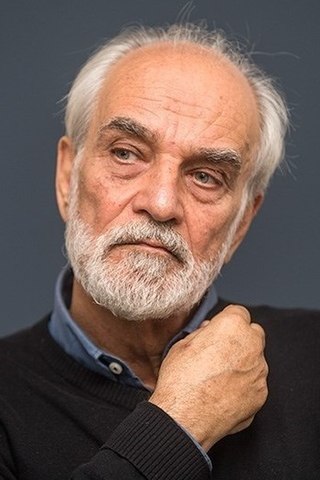
Aydin Aghdashloo is an Iranian painter, graphist, art curator, writer, and film critic.
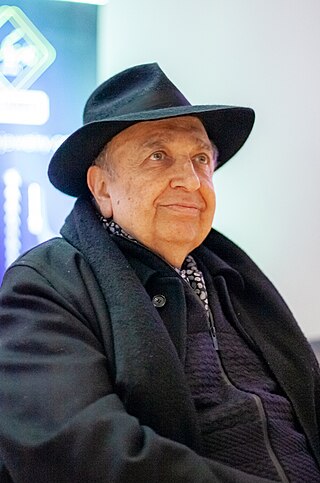
Bahman Farmanara is an Iranian film director, screenwriter, and film producer. Bahman Farmanara is the second son in a family of four brothers and one sister. The family business was Textile and he was the only son who did not join the business and went off to the United Kingdom and later on to the United States to study acting and directing. He graduated from the University of Southern California with a BA in Cinema in 1966. After returning to Iran and doing military service, he joined the National Iranian Radio and Television.
Mohammad Ali Taraghijah was an Iranian painter, his work often featured rural, Iranian, landscape imagery.

Sadegh Tirafkan was an Iranian contemporary artist who lived mainly in Tehran, Iran.
Raxitraj mehta is an Indian artist.

Massoud Arabshahi, was an Iranian painter, and bas-relief sculptor. He was a leading member of the Saqqakhaneh movement, and was known for his conceptual artwork. Arabshahi had worked in Tehran, Paris, and California.
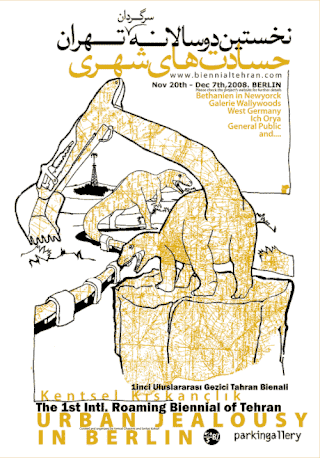
Urban Jealousy, the 1st International Roaming Biennial of Tehran was an itinerant multimedia art exhibition presented in Istanbul, Berlin and Belgrade. The Biennial was curated and organised by Amir Ali Ghassemi and Serhat Köksal.
Bahram Alivandi was an Iranian-born Austrian visual artist. He was known primarily for his modernist paintings, which typically depicted stories from Persian mythology and literature, and expressed mysticism. He has also produced a number of wall tapestries that, like his works on canvas, demonstrate his own instantly recognizable visual language. He lived in Vienna, Austria from 1983 to 2012.

Ryszard Wasko (Waśko) is a Polish artist, who has worked in multimedia, including photography, film, video, installation, painting, and drawing. He is also known as a curator and organizer of art events. He lives and works in Berlin.
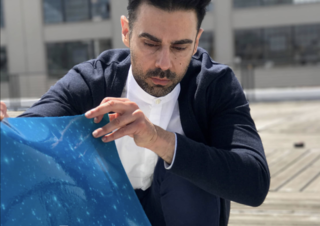
Ala Ebtekar is a contemporary artist who works between his native San Francisco Bay Area and Tehran, Iran. Ebtekar is known primarily for his work in painting, drawing, illumination, and installation that explores the juncture between history and myth, forging a multi-faceted project.

Taher Shekh olhokamaei, Alhokamei is an Iranian contemporary sculptor.
Mehrdad Afsari is an Iranian photographer best known for his artistic and unusual landscapes with a conceptual and philosophical approach.

Hiwa Pashaei or Hiva Pashaei is a Kurdish painter, photographer, calligrapher, graphist, curator and publisher from Iran, living in the United States. He is active in the fields of painting, graphic design, research and education of visual arts. Pashaei is known for his spearhead role in pixel art in Iran and Kurdistan. Pashaei is also renowned because of his innovative use of Kurdish culture themes, specially culture of Kermanshah region Kurds, creating figurative works with the subject of Kurdish women, and presenting these themes in the form of modern and post modern art. He is manager of Rouge Art Gallery and Founder of Jowan Visual Art School in Tehran, and also CEO & Founder of Art & Culture Center of California "ACCC" in Los Angeles. Pashaei has held several individual and group exhibitions in Iran and other countries like Iraq, Japan, Italy, France and United States.
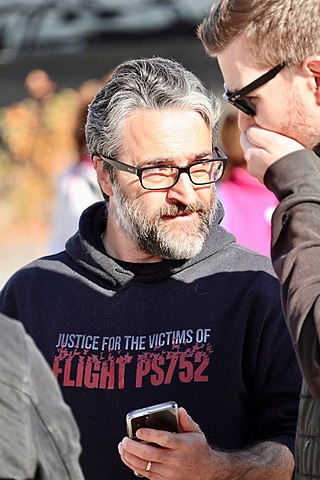
Hamed Esmaeilion is an Iranian-Canadian social activist, author, and dentist. Esmaeilion won Hooshang Golshiri Literary Awards for two of his books, Dr. Datis and Thyme is not Fair. Esmaeilion is president and spokesman of The Association of Victims' Families of Flight PS752.















